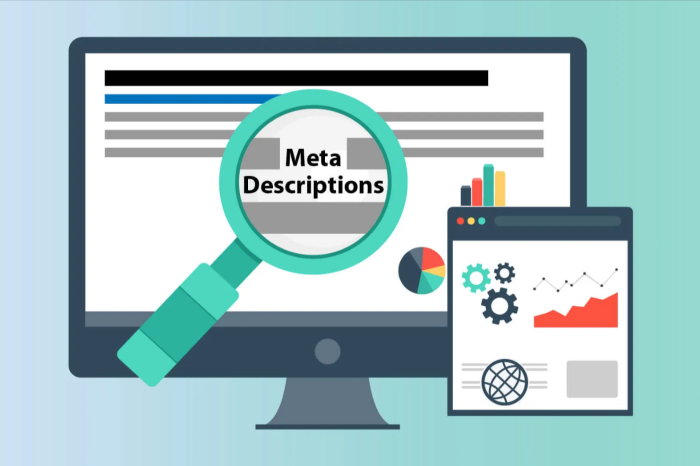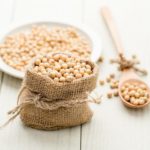
How To Write Meta Descriptions Effectively
Meta descriptions are an integral component of your SEO strategy. They act as a call-to-action for searchers, encouraging them to visit your website.
Meta descriptions are often overlooked, yet they have the potential to significantly impact search rankings. If you’re new to SEO or simply want to enhance your current strategy, this guide will offer helpful guidance on how to maximize the effectiveness of your website’s meta descriptions.
Keywords
Meta descriptions are two-line blurbs that appear in search results. While they don’t directly affect SERP rankings, they can improve click through rates and drive organic traffic to your website.
Writing an effective meta description requires both art and science, so it’s essential to know what steps to take when crafting one. It may take some effort to get it just right, but once you do, the rewards will be well worth the effort.
To effectively utilize keywords, it’s important to select phrases and words that closely match what people are searching for. Be careful not to become overly keyword-centric though as this could appear overly optimistic and send the wrong message to potential customers.
Additionally, avoid repeating keywords more than three times as this can lead to a keyword-packed meta description that does nothing for your SEO ranking. You can achieve this by using synonyms and separating each page’s keywords with an appropriate delimiter such as a hyphen, colon or pipe.
Another essential aspect of your meta description is including a call-to-action. A strong call-to-action will draw people to your website and motivate them to take an appropriate action.
Your meta description should include a call-to-action, as this will make you stand out from competitors and boost click through rates. This is especially true if the content of the web page being described by the meta description is compelling and pertinent to readers’ interests.
Make your meta descriptions even more effective by using a tool like Jasper to assist you. With over 52 templates available, Jasper can help create descriptions tailored specifically for your website.
When crafting your meta description, it’s essential to use a neutral tone. Doing so prevents readers from being offended or confused by the copy. Opt for an objective style that’s not too flowery or overly descriptive as this could result in low click through rates (CTRs) and lower site rankings.
Finally, meta descriptions are an integral component of your SEO strategy and should be treated as such. A well-crafted meta description can be a major driver of organic traffic for your site, so take the time to craft them effectively.
Conciseness
Meta descriptions are those brief yet significant sentences that appear beneath the title of your page on search engine result pages (SERPs). While they don’t directly impact rankings, these 155 character lines play a major role in increasing click-through rates for websites.
A powerful meta description can excite users about visiting your website. It should be tailored specifically to the content on the page and encourage readers to click through.
Your meta description must also be captivating enough to elicit emotion from readers, such as excitement or fear. The ideal meta descriptions will captivate their attention and leave them with a lasting impression.
Avoid using cliches or overused phrases in your meta descriptions. While they may seem useful at first glance, these tend to be too tired and ineffective for readers to engage with.
Generating an effective meta description necessitates some experimentation and testing. You must consider your audience, the content you are writing about, as well as which keywords your target customers are searching for.
If you’re not sure how to craft your meta description, Yoast SEO provides real-time feedback so you can see exactly how long the text will appear in Google’s snippet preview.
The length of your meta description can have a major impact on whether or not people click through to your page, so be sure to leave enough room. If it’s too short, it won’t appear on SERPs; conversely, if it’s too long it could be cut off before reaching the user’s computer screen.
When crafting meta descriptions for websites, use your primary keyword as the focus keyphrase. Doing this makes it simpler for Google to recognize what the page is about and highlight it when people search for relevant terms.
Create unique meta descriptions for each page of your website to maximize SEO benefits; duplicating content can be detrimental if multiple pages compete for the same search terms.
Relevance
Meta descriptions are often the first impression your website makes on searchers, and they can also help boost click-through rates. That’s why it’s essential to craft them carefully and effectively.
Google considers a page’s meta description to be one of the most influential factors in determining website visibility in search results. Therefore, they should be written with the user in mind and deliver information tailored specifically for them.
Meta descriptions should not only be informative, but they should also give visitors a concise understanding of your site’s topic. This can be accomplished by selecting keywords related to the content on your page.
It is beneficial to emphasize emotion in your descriptions, since most people make decisions based on emotion when purchasing products or choosing brands. This could include targeting positive feelings such as excitement or fear/trepidation.
Finally, your meta description should be tailored to entice users and push them to take action on your website. Do this by including a call-to-action such as “Get Started,” or “Learn More.”
When crafting your meta description, don’t forget to incorporate your focus keyphrase. Doing this ensures that Google will highlight your keyword and help boost the rank of your page on SERPs.
For optimal effectiveness, include your primary keywords throughout your description and utilize them frequently. It is essential that you use only relevant keywords, however; too many can lead Google to believe your description is spammy or overstuffed with terms.
You can include a direct call-to-action in your meta description, such as “learn more,” or “contact us.” These commands provide searchers with an explicit path you want them to take.
Another factor affecting the relevance of your meta description is its length. Generally speaking, keep it between 160 and 165 characters to avoid it being truncated when appearing in search result pages snippets.
Call-to-action
Meta descriptions are the text snippets displayed on search engine result pages (SERPs) to entice potential customers to click through to your website. Doing this can generate more leads and boost your website’s ranking, so it’s essential that you take time to craft an effective meta description that leaves a good impression on internet users.
Crafting an effective meta description requires writing for the reader, avoiding keyword stuffing, and including social media links. Here are some strategies to consider:
Use target keywords in your meta description to help Google better comprehend the content of your web page and boost your SEO rankings. However, keep in mind that it should also read naturally to a human reader; using words which are difficult to decipher can turn users away from your page, leading to lower click-through rates.
Create a captivating meta description by emphasizing what sets your product or service apart from competitors and why people should purchase from you. Doing this will help convince readers that investing in your item is worth the effort, inspiring them to buy from you right away.
The next step in crafting an effective meta description is to include a call-to-action. This could be something as straightforward as “Click Here!,” which will quickly grab the attention of searchers.
It’s also beneficial to include a link to your site in the meta description, as this can drive traffic and boost its ranking. This strategy works especially well for ecommerce stores with many products since it gives searchers an incentive to click through.
A successful meta description should be both concise and snappy. It should be short enough to be easily read, yet long enough to include all the pertinent information a searcher needs to understand your page before they decide whether or not to click through.
Testing different meta descriptions is the best way to discover which ones work for your business and target audience. With this insight, you can craft more effective page metas that increase organic click-through rates.








